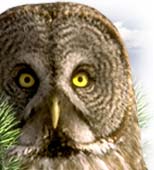Monitoring the Birds of
the Black Hills
Located in western South Dakota and eastern Wyoming, the Black Hills host a
unique assemblage of over 140 breeding bird species. In cooperation with the US
Forest Service, RMBO launched a new monitoring program in 2001 aimed at
providing population status and trend data for breeding birds in the Black
Hills National Forest. Other valuable bird-related information this program
will yield includes insight into species-habitat relationships, species-forest
management relationships, species distribution and abundance, and the relative
importance of late-successional stands and post-burn habitats for certain
species.
Implementation of the first phase of this project entails establishing point
transects at 30 permanent monitoring sites in each of 10 habitats (300 total)
in the Black Hills: "southern" and "northern" ponderosa pine forest, aspen,
pine-juniper shrubland, mixed-prairie grassland, riparian habitat, wet meadows,
late-successional pine forest, white spruce, and post-burn areas. Each point
transect contains up to 15 count stations (marked using GPS) where observers
employ distance-sampling techniques to count birds each year.
In 2001, we established 261 point transects and conducted a total of 3,319
counts of birds. We recorded a total of 136 bird species on point transects,
many of which were rare and observed on few occasions. A few additional species
were observed at other times. We obtained robust, habitat-specific density
estimates for 51 species of birds (comprising 90% of all individual birds
observed) and important population status data on many others. In 2002, we will
add new permanent monitoring sites to the program, and modify some of the
original habitat assignments. We will also begin to focus special efforts on
some of those species whose natural histories are such that they are not well
sampled through the techniques currently employed.
For More Information:
david.hanni@rmbo.org
230 Cherry Street
Fort Collins, CO 80521
(970) 482-1707



